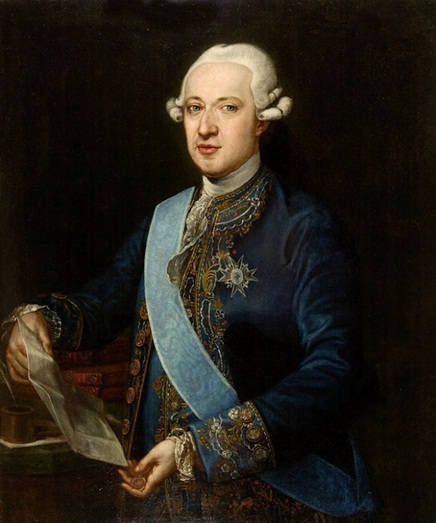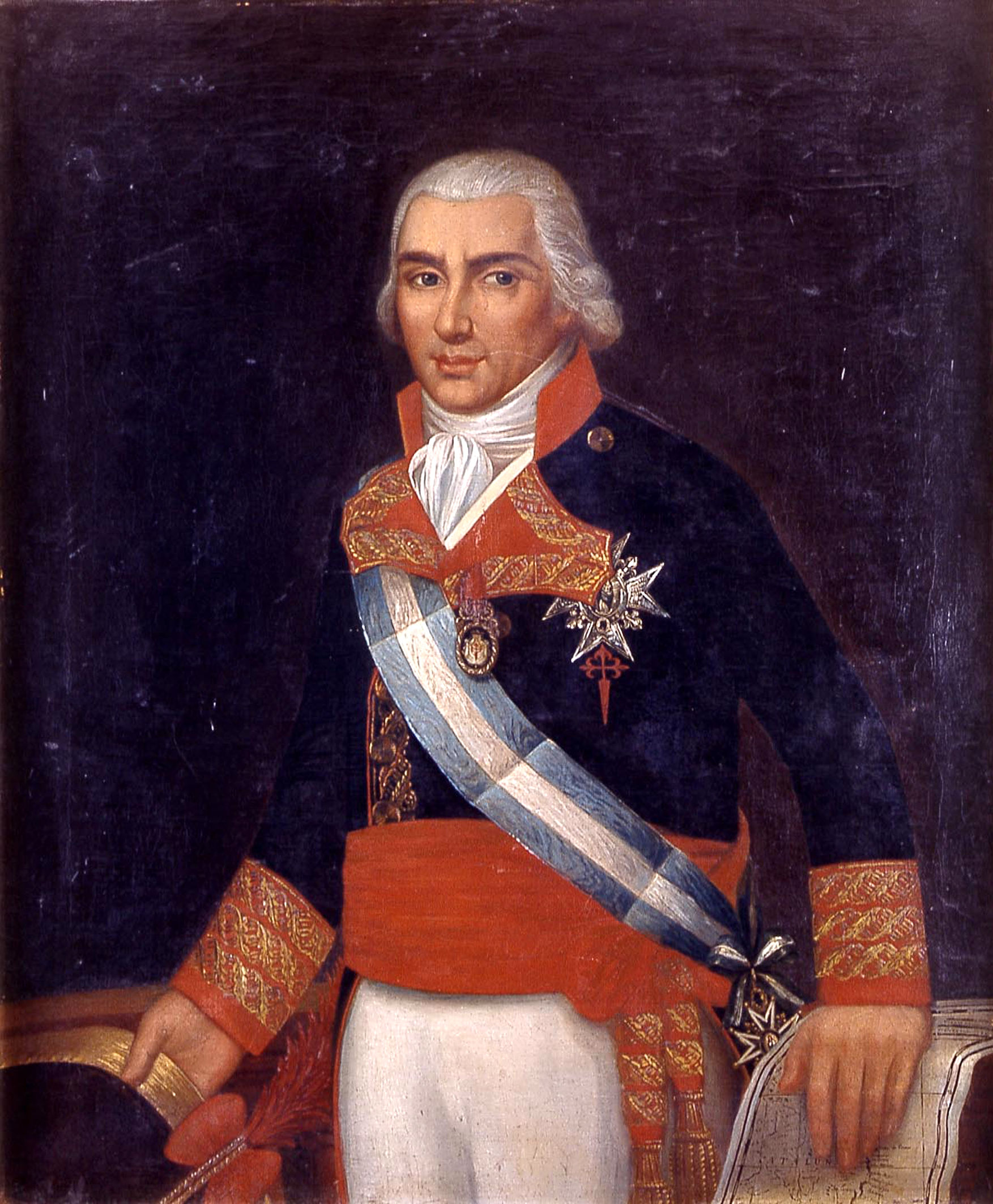 |
| Genealogía alemana. By Anonymous (http://www.ahneninfo.com/de/ahnentafel.htm) [Public domain], via Wikimedia Commons |
Una nueva investigación en España revoluciona la
genealogía de la familia Lísperguer
genealogía de la familia Lísperguer
Familias en Chile hay muchas, pero pocas tan interesantes y con una implicación cultural tan intensa como la familia Lísperguer. El hecho de que Pedro Lísperguer haya convivido con el Emperador en Alemania y los Países Bajos y luego con su hijo, Felipe II, en Inglaterra, no ha hecho sino acrecentar ese gran mito legendario de los Lísperguer. Así, hay quienes han afirmado que Pedro Lísperguer provenía de los emperadores alemanes, de una dinastía real y hasta de los duques de Sajonia.
En Chile se han encontrado muchas pruebas a este respecto, donde certificaciones armeras así lo constataban. Hasta la tradición oral o numerosos indicios como el hecho de que Pedro Lísperguer viniera a América cargado con una galería de retratos de los duques de Sajonia, no ha hecho más que intensificar la dimensión del mito. Por todos estos motivos, numerosas personas en Perú, Chile y Argentina, se sienten hoy orgullosas de descender del noble, origen de una de las familias más controvertidas de Hispanoamérica.
Los más destacados genealogistas chilenos como Juan Luis Espejo, o Luis de Roa y Ursúa, no han dudado en otorgar una gran relevancia a esta familia, como una de las de mayor prosapia de Chile y así lo han plasmado en sus tratados genealógicos. Ahora, un chileno emigrado a España, Daniel Piedrabuena Ruiz-Tagle, viene a revolucionar todo el concepto que teníamos sobre la familia Lísperguer. En primer lugar, ha estudiado a fondo todo el recorrido europeo del conquistador en su obra "El conquistador alemán Pedro Lísperguer Wittemberg: De cortesano de Carlos V y Felipe II a célebre precursor de Chile", donde en un relato apasionado nos narra el paso del conquistador por Alemania, Países Bajos, España e Inglaterra en convivencia con las personalidades más encumbradas del momento.
Sin embargo, es en su segunda obra, titulada "Los Lísperguer Wittemberg: una familia alemana en el corazón de la cultura chilena", donde el experimentado investigador brilla en su exposición, ofreciendo un trabajo científico, de carácter fundamentalmente genealógico (aunque no exclusivamente), que le ha valido el reconocimiento de prestigiosas revistas científicas como Atenea, o el también reconocimiento de la Academia Chilena de la Historia, y el Instituto Chileno de Investigaciones Genealógicas, donde su secretario y presidente respectivamente, el Dr. Isidoro Vázquez de Acuña, ha escrito un elogioso artículo sobre ella en nº 55 de la Revista de Estudios Históricos.
El abogado e investigador Piedrabuena, después de azarosas búsquedas que se han prolongado durante 15 años, en la Biblioteca Nacional de España y otros lugares, además de varios viajes de investigación en archivos regionales, ha llegado a conclusiones muy interesantes, que suponen un giro copernicano frente a cualquier concepción precedente de la temática.
El investigador, por tanto, ha partido de varias premisas para poder revolucionar la genealogía de los Lísperguer. En primer lugar ha estudiado a fondo todas todas las fuentes tanto españolas como latinoamericanas donde se mencionaba el apellido Lisperguer. Después, tras la consulta de especialistas, ha calibrado el valor y la credibilidad que se puede dar a los llamados reyes de armas. Asimismo, ha estudiado a fondo el cognomen y la heráldica de la familia, como una vía para llegar hacia su ubicación regional.
También se ha implicado a fondo en reconstruir las parentelas de Pedro Lísperguer en Alemania, a veces estudiando las inscripciones en las lápidas, y con otros documentos muy interesantes hallados en poblaciones vecinas, ya que el archivo municipal de Worms se quemó, tras la invasión de la ciudad por los franceses en el siglo XVII. A partir de aquí ha podido dar vida a todos los antepasados de Lísperguer que fueron consejeros y ostentaron importantes cargos en la ciudad de Worms.
Pero lo que ha sido absolutamente revolucionario es el estudio de los primos de los Lísperguer en España: la familia Wittemberg. Esta familia, fue muy exitosa en Andalucía, logrando emparantarse con la nobleza local, además de varios títulos e incluso grandes de España, además de regentar una de las más prósperas compañías marítimas de la zona, que estuvo activa a través de sus hijos y nietos durante 130 años.
La familia Wittemberg, dejó durante tres siglos numerosas certificaciones y documentos nobiliarios, donde expresó reiteradamente su emparentamiento con los Lísperguer, y como eran una familia católica, que el Emperador envío a Chile y España. En estos documentos, existen numerosos testimonios sobre su antepasado en Alemania, su pertenencia a una gran casa ducal, y en definitiva de un glorioso pasado de ambas familias en Alemania, que ha venido a convulsionar todo lo que hasta ahora se había asumido sobre la familia Lisperguer.
Estas magníficas obras se puede adquirir a través de los siguientes enlaces:
Los Lisperguer Wittemberg: una familia alemana en el corazón de la cultura chilena:
El conquistador alemán Pedro Lísperguer Wittemberg pulsa aquí:
Para acceder al artículo sobre el origen de la familia Lísperguer publicado en la Revista Atenea pulsa aquí:
Si quieres conocer el artículo del Dr. Isidoro Vázquez de Acuña, puedes hacerlo aquí:
Revista de Estudios Históricos
Muchas gracias y no te olvides de comentar, tu opinión es importante.
Conoce mi última obra:











